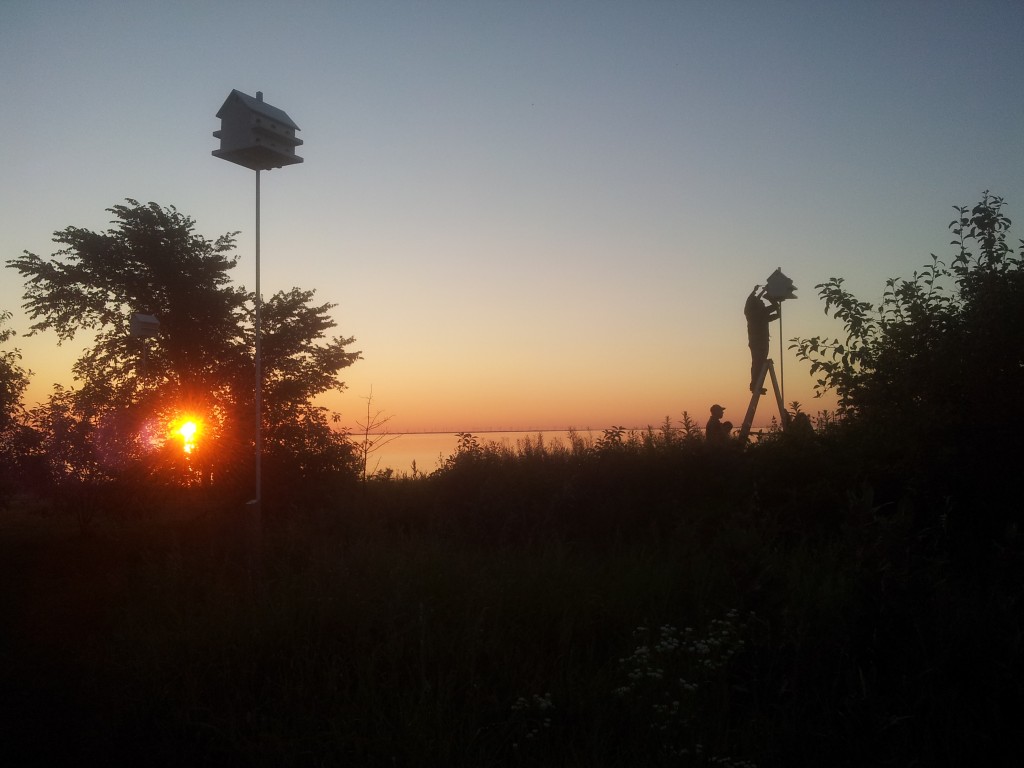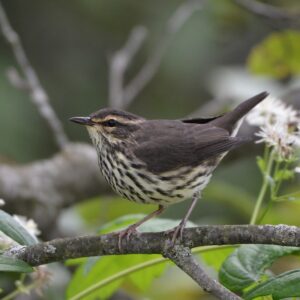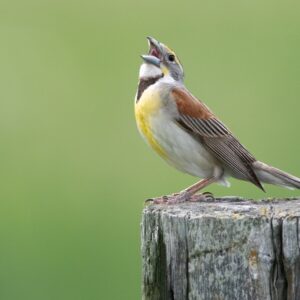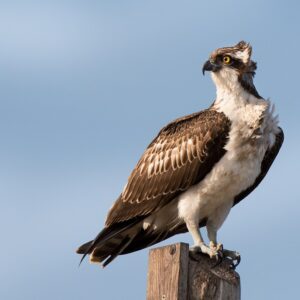Purple Martin Project – Stories From the Field
The first phase of the Purple Martin Project has been completed! Over the second week of July, nearly 60 adult birds were fitted with tracking devices in order to find out more about what kind of risks this declining species might be facing on their migratory journey to Brazil.
In this blog I’ve included a summary of our fieldwork, some of my favorite photos, media coverage and links, as well as our goals moving forward.
[separator headline=”h2″ title=”Field Work Summary”]
Over the course of the week, we had a dream team of researchers, volunteers, naturalist groups, hosts, and landlords (purple martin caretakers) participate. Field work was lead by researchers from York University and the University of Manitoba. Approximately a dozen volunteers received training which included banding, taking wing and leg measurements, taking feather and blood samples, and fitting the birds with tracking devices (GPS and geolocators).
Our field work brought us to some very scenic places surrounded by nature, particularly since Purple Martins tend to nest in close proximity to bodies of water. All three of our field sites were encompassed within an Important Bird Area (IBA). IBAs are recognized globally for their significance to bird populations and there are approximately 600 of these sites across Canada. Our first field site, the Nepean Sailing Club in Ottawa, is located on a beautifully maintained property next to the Ottawa River. We also had field sites on both Amherst Island and Wolfe Island; charming rural farming communities which must be reached by ferry from the Kingston area. At each of these locations, we were treated to gorgeous sunrises over Lake Ontario.
In Ottawa, we were joined by local volunteers, our partners from the Innis Point Bird Observatory (IPBO) and the colony landlord, Peter Huszcz. Peter custom built the two very large martin houses which can be lowered for easy maintenance. Every year Peter and the IPBO hold community events to band the nestlings. In recent years they have noticed a steady decline in the number of nestlings which they are very concerned about.
Our first day of work in Ottawa was delayed by heavy rain, yet it was the busiest of all our field sites. Not only was the colony very large (approximately 50 adult pairs), but there was also significant amount of media attention, and visitations from curious passersby. We set mass traps by installing trap doors held up by fishing line above the cavity entrance holes. The traps were triggered later that evening by cutting the fishing line once the birds were safely settled in their cavities for the night. We returned again at sunrise to conduct our work with the captured birds. Despite weather delays, we managed to deploy 29 tracking devices.
The story of our work was covered by CTV Ottawa, CBC Ottawa, the Ottawa Citizen, and Ottawa Metro. The story was picked up by newspapers across the country including the Calgary Herald, Windsor Star, Edmonton Journal, and Regina Leader Post.
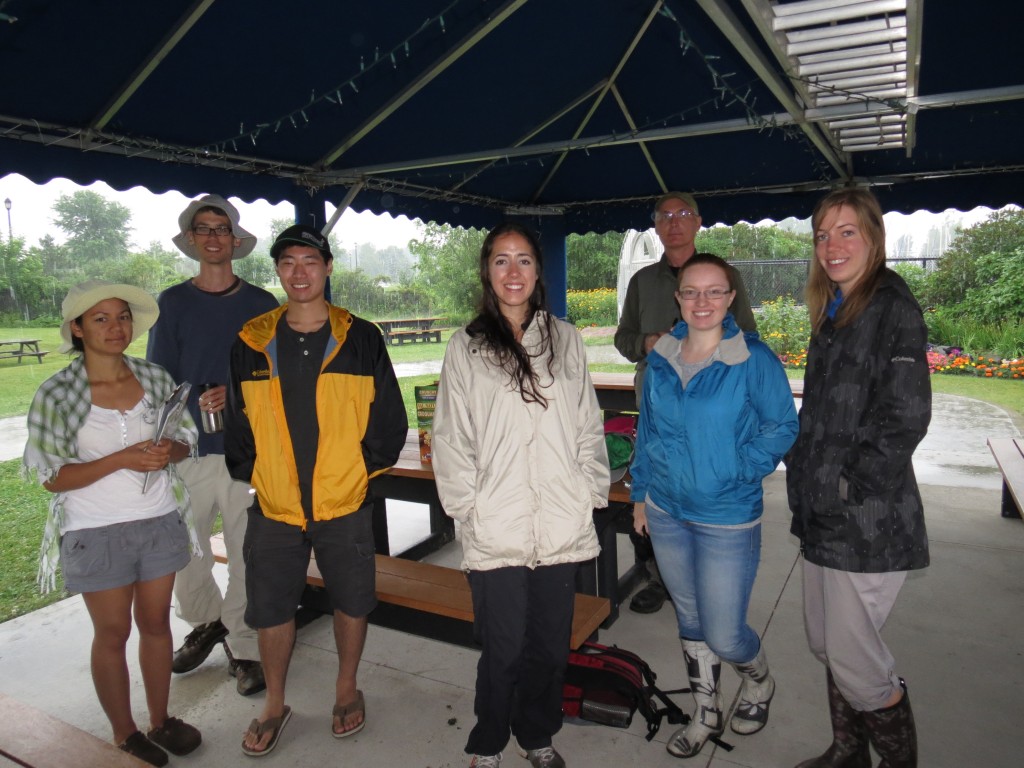
Waiting to begin our field work during a heavy downpour at the Nepean Sailing Club (Photo by Ted Cheskey)
The majority of the nestlings at Wolf Island and Amherst Island were much older than what we observed at the Nepean Sailing Club – some had already fledged! This presented a bit of a challenge to trapping the adult birds. This is because the adult birds do not often enter the cavity once the nestlings are old enough to begin feeding at the entrance holes. In addition, the bird houses at these locations could not be manually lowered. We had to get a bit creative with our methods, which turned out to be a lot of fun. We used a tall ladders (and tall people) to sneak up on the bird houses at night and cover up the entrance holes. At sunrise, our team returned to find that we had captured more birds than expected, but still not enough to reach our goal. So we remained onsite throughout the afternoon and proceeded with target trapping with some success.
We were treated with great hospitality and kindness in these communities. The Kingston Field Naturalists had a key role to play in assisting with our work in this area. An article was written in the Kingston Whig-Standard about our work on Amherst Island, and Nature Canada also made an appearance on CBC Ontario Morning.
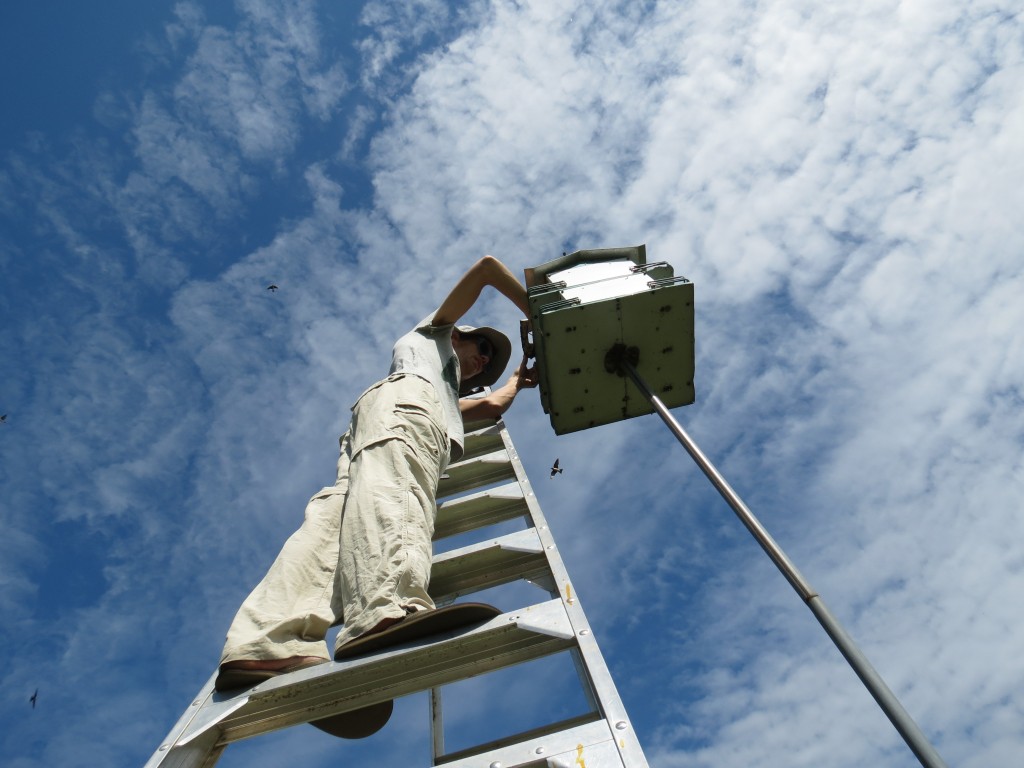
PhD Candidate Patrick Kramer from York University reaches for captured birds as Martins fly overhead (photo by Ted Cheskey)
[separator headline=”h2″ title=”Looking Forward”]
We are thrilled to see the public as excited as we are about Purple Martins and their conservation. News stories about this project have initiated a wonderful response from the community. At Nature Canada, we get phone calls and e-mails everyday from folks who are interested in becoming involved. We absolutely love hearing from you!
It is a privilege to be a part of this project and to be working with such fantastic people. We are very much looking forward to August when we will begin the second phase of the project: a search for sites called ‘roosts’ where Martins gather by the thousands before they undergo fall migration. Determining the location of Martin roosts in the Eastern Ontario region will be an important piece of the puzzle in helping to unravel the mystery of why these birds are experiencing such a startling decline.
Check back near the end of August for another update from the field!

